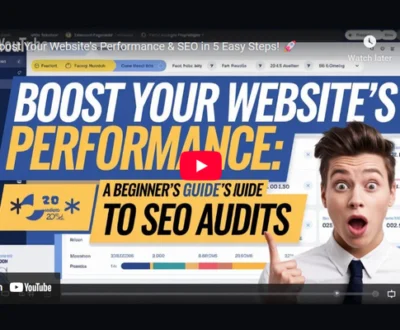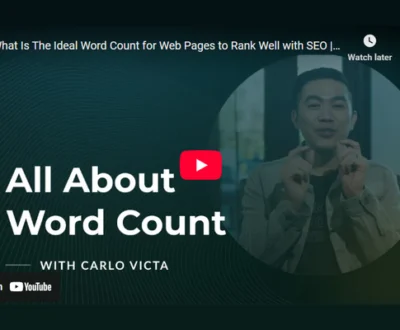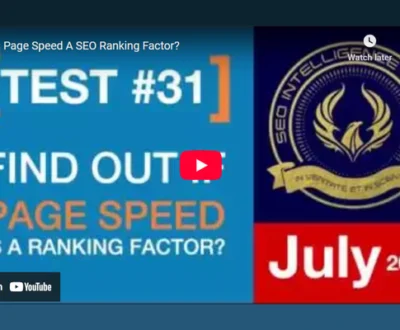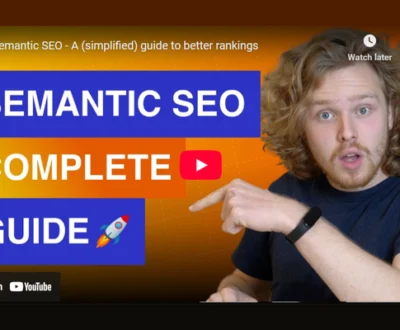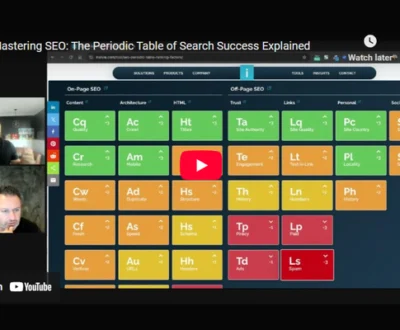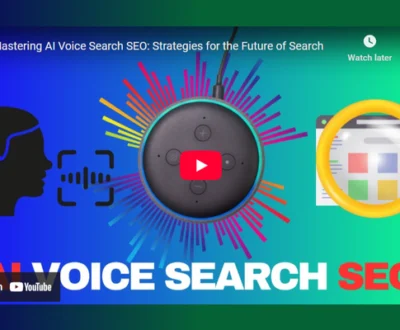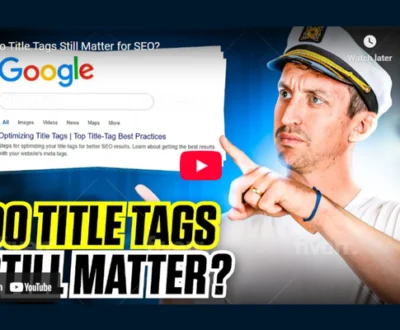I focus on intent-based keywords because they match what people actively want, helping me attract the right audience and generate qualified leads efficiently. By identifying keywords linked to specific intents—informational, commercial, or transactional—I tailor my content to exactly meet user needs, which boosts conversions. Analyzing search results reveals how competitors approach intent, guiding me to optimize content and calls to action strategically. If you want to increase leads effectively, understanding this approach is essential.
- Key Takeaways
- Understanding the Different Types of Keyword Intent
- How to Identify Intent-Based Keywords Effectively
- Analyzing SERPs to Decode User Intent
- Aligning Content Strategy With Keyword Intent
- Creating Content That Matches Buyer Journey Stages
- Leveraging Intent Data for Better Lead Targeting
- Tools and Techniques for Keyword Intent Research
- Maximizing ROI by Focusing on High-Intent Keywords
- Frequently Asked Questions
- Final Thoughts
Key Takeaways
- Identify and target high-intent keywords that indicate readiness to engage or purchase to attract qualified leads effectively.
- Align content types and CTAs with specific keyword intents to increase user engagement and lead conversions.
- Utilize SEO tools like Semrush or Ahrefs to categorize and prioritize keywords by intent for focused lead generation.
- Analyze SERP features and competitor content to uncover intent signals and fill gaps with optimized content.
- Monitor user behavior and engagement metrics to continuously refine keyword targeting and maximize lead generation ROI.
Understanding the Different Types of Keyword Intent
Why does understanding keyword intent matter so much in SEO? Because keyword intent reveals the underlying purpose behind a user’s search query, directly reflecting their search behavior. When you grasp this, you can tailor your content to meet user needs more precisely, which search engines like Google highly value. Search intent helps improve user experience and content relevance, enhancing SEO performance and user satisfaction.
There are four main types of keyword intent: informational, navigational, commercial investigation, and transactional. Informational intent covers users seeking knowledge or answers, such as “how” or “what” questions.
Navigational intent involves users trying to reach a specific site or brand. Commercial investigation intent indicates users comparing products or services before buying. Finally, transactional intent signals readiness to take action, like making a purchase.
Sometimes, search behavior shows mixed intents, so understanding these distinctions helps create content that aligns closely with what users expect. This alignment improves your chances of ranking higher and attracting the right audience.
How to Identify Intent-Based Keywords Effectively
To identify intent-based keywords effectively, I start by analyzing search query patterns, paying close attention to the words and phrases that signal specific user goals.
Then, I use keyword research tools to categorize and filter these terms by their intent, which helps me focus on the most relevant keywords for generating leads.
Combining these methods gives a clearer picture of what potential customers are looking for and how to match their intent with the right content. Monitoring Google Analytics metrics can also indicate how well the content aligns with user intent and performs over time.
Analyze Search Query Patterns
When analyzing search query patterns, I focus on identifying clear signals that reveal user intent behind each keyword. By studying search behavior and query analysis, I track intent trends and user patterns, noting keyword variations and search modifications. Phrase structures and intent signals help reveal whether the intent is informational, transactional, or commercial. Language shifts, especially in question-based queries, also offer clues. Engagement metrics like bounce rate and time on page confirm how well content matches intent.
| Aspect | What I Look For |
|---|---|
| Keyword Variations | Modifiers like “how to,” “buy” |
| Phrase Structures | Question formats, long-tail phrases |
| Intent Signals | Transactional, informational cues |
| Engagement Metrics | CTR, bounce rate, time on page |
Utilize Keyword Research Tools
After identifying search query patterns and understanding the intent behind keywords, I turn to keyword research tools to sharpen this insight.
Tools like Semrush and Moz offer powerful features for keyword analysis, including intent filtering that categorizes keywords as informational, navigational, commercial, or transactional. This helps me tailor content precisely—for instance, using informational keywords for blog posts and transactional ones for ads.
I rely on intent widgets and SERP feature analysis within these tools to confirm the dominant user intent. Additionally, platforms like Google Keyword Planner and Search Console provide data on search volume and user behavior, enhancing my strategy further.
Analyzing SERPs to Decode User Intent
How can analyzing search engine results pages (SERPs) help you understand what users really want? By carefully examining SERP features like featured snippets, local packs, and shopping carousels, I can identify clear intent signals that reveal whether users seek information, local services, or products.
Looking at top-ranking pages shows me how competitors address these needs, guiding my competitor analysis and highlighting content gaps I can fill. Observing user behavior through “People Also Ask” boxes and related searches uncovers additional keyword variations and search trends to target.
I also assess ranking factors such as content type and format, ensuring my content matches what users prefer. This systematic SERP analysis not only clarifies the “why” behind search queries but also helps me tailor content precisely, improving relevance and lead generation.
Understanding these elements allows me to create content that aligns with user intent, ultimately boosting my site’s performance in search results.
Aligning Content Strategy With Keyword Intent
To align your content strategy with keyword intent, it’s important to match the type of content to the user’s goal—like using blog posts for informational searches or product pages for transactional queries.
Equally important is pairing clear calls-to-action with each intent type, guiding users toward the next step they’re ready to take.
Content Types by Intent
When crafting an effective content strategy, it’s crucial to align your content types with the specific intent behind your target keywords. Different intents call for distinct content formats to maximize user engagement and relevance.
For example, informational intent suits blog posts, how-to guides, and videos that educate and answer questions, helping users learn.
Commercial intent benefits from comparison charts, product reviews, and buyer’s guides that assist users in evaluating options.
Transactional intent requires product pages, pricing pages, and landing pages designed to facilitate immediate actions like purchases or sign-ups.
By matching content format to keyword intent, you guarantee that visitors find exactly what they need, improving both their experience and your SEO results.
This alignment enhances user engagement and drives more qualified leads through the marketing funnel.
Matching CTAs to Intent
Since calls to action (CTAs) guide users toward the next step, aligning them with the specific intent behind your keywords is essential for driving meaningful engagement.
Applying CTA personalization strategies lets you tailor messages according to user intent, whether informational, commercial, transactional, or navigational. For example, softer CTAs like “Learn More” work well with informational intent, encouraging exploration, while direct commands such as “Buy Now” suit transactional intent.
Intent driven design guarantees CTAs visually stand out and match content tone, improving clarity and user experience. Testing different CTA elements helps identify what resonates most with your audience.
Creating Content That Matches Buyer Journey Stages
Although many marketers create content regularly, aligning that content with each stage of the buyer journey greatly improves its effectiveness.
To do this well, you must understand your buyer personas and their unique needs at different points in the journey. Content alignment means producing the right type of content for Awareness, Consideration, and Decision stages.
For example, early-stage prospects benefit from educational blog posts addressing their pain points, while those in Consideration need detailed guides or case studies to evaluate solutions. At the Decision stage, content like product demos and customer testimonials helps close the sale by addressing final objections.
Mapping your content to these stages guarantees you deliver relevant information when prospects seek it, building trust and guiding them smoothly through the funnel. This focused approach avoids generic messaging, making your marketing efforts more targeted and effective in generating qualified leads.
Leveraging Intent Data for Better Lead Targeting
Because intent data captures a range of online behaviors that signal a prospect’s interest or readiness to buy, leveraging this information can greatly improve lead targeting.
By analyzing buyer behavior, I can identify which prospects are actively researching solutions and prioritize outreach accordingly. Intent data applications allow me to focus marketing efforts on leads with the highest potential, reducing wasted resources on cold contacts.
Here are three key benefits I’ve found when using intent data for lead targeting:
- Improved lead quality through precise buyer behavior analysis
- Enhanced personalization by tailoring messages to specific interests and pain points
- Shortened sales cycles by engaging prospects at the right moment in their decision process
Using intent data insights helps me target in-market buyers more effectively, increasing engagement and conversion rates.
This approach makes my lead generation smarter and more efficient, ultimately driving better results with less effort.
Tools and Techniques for Keyword Intent Research
Understanding the right keywords to target depends heavily on identifying the intent behind them. To do this effectively, I rely on various tools and techniques that help with intent classification. Major SEO platforms like Semrush and Ahrefs offer built-in features that automatically categorize keywords by intent, simplifying the process.
I also analyze keyword modifiers—words like “how to” or “buy”—which often reveal whether a keyword is informational, transactional, or commercial. Beyond tools, I examine SERP elements such as Featured Snippets and People Also Ask boxes to understand what type of content Google favors for those queries.
Manual classification plays a role too, especially when keywords lack clear modifiers; organizing them in spreadsheets with consistent guidelines guarantees accuracy. Combining these approaches—automated tools, modifier analysis, and SERP review—provides a clearer picture of user intent, allowing me to target keywords that align with what potential leads are truly searching for.
Maximizing ROI by Focusing on High-Intent Keywords
When you focus on high-intent keywords, you connect with users who are ready to take action, which makes your marketing efforts more efficient and impactful.
The high intent benefits include a higher conversion rate and better return on investment, since these keywords target users further down the sales funnel. To maximize ROI, keyword prioritization is essential. This means selecting keywords based on intent, search volume, and relevance to your business goals.
Here are three key strategies to maximize ROI with high-intent keywords:
- Prioritize long-tail, transactional keywords that attract ready buyers with less competition.
- Use negative keywords to exclude irrelevant traffic and focus your budget on quality clicks.
- Continually analyze performance data to refine your keyword list and optimize bids accordingly.
Frequently Asked Questions
How Often Should Intent-Based Keywords Be Updated in Campaigns?
I update intent-based keywords about every six months to maintain keyword frequency that supports campaign optimization. Regular reviews help me catch performance shifts and evolving user intent, ensuring my campaigns stay relevant and efficient.
Can Intent-Based Keywords Improve Local Lead Generation?
Imagine your business as a beacon in local search—intent-based keywords sharpen that light by boosting keyword relevance. I’ve seen how they pull in nearby customers ready to act, improving local lead generation greatly.
What Role Does Voice Search Play in Keyword Intent?
I see voice recognition shapes keyword intent by influencing search algorithms to favor natural, conversational queries. This means we must craft content that matches how people speak, ensuring we meet their true intent effectively.
How Do Intent Keywords Affect Social Media Advertising?
I’ve found that intent keywords sharpen social media advertising strategies by targeting users ready to act, boosting ad relevance, improving click-through rates, and optimizing spend, which ultimately makes your campaigns more efficient and effective.
Are There Industries Where Intent-Based Keywords Are Less Effective?
Yes, I’ve found intent-based keywords less effective in niche markets and industries driven by seasonal trends. Limited search volume and fluctuating demand often mean broader strategies or relationship-building work better for sustained engagement.
Final Thoughts
I once compared keyword intent to a compass guiding a traveler—without it, you risk wandering aimlessly. Data shows that businesses focusing on high-intent keywords see up to 50% more qualified leads. By understanding and applying intent-based keywords, you align your content with what users truly want, improving your lead quality and conversion rates. Remember, targeting intent isn’t just a tactic; it’s a strategic approach that sharpens your marketing focus and maximizes your ROI.
Windee Tan is a seasoned SEO Specialist with over a decade of experience helping businesses grow their organic visibility through data-driven strategies. He specializes in technical SEO, content optimization, and local search, with deep knowledge of tools like GA4, GSC, SEMrush, and Screaming Frog. Windee is passionate about translating complex SEO insights into practical tactics that drive real-world results. When he's not auditing sites or crafting keyword strategies, he’s exploring the latest trends in AI, digital marketing, and productivity.
About this blog
We are a digital marketing company with a focus on helping our customers achieve great results across several key areas.
Request a free quote
We offer professional SEO services that help websites increase their organic search score drastically in order to compete for the highest rankings even when it comes to highly competitive keywords.
Subscribe to our newsletter!
More from our blog
See all postsRecent Posts
- Writing Clear Calls to Action That Boost On-Page SEO 21 August 2025
- Why Word Count Still Matters in On-Page SEO Today 20 August 2025
- Why Site Speed Is Critical for On-Page SEO Success 19 August 2025


